AI Agents Examples: Real Use Cases You Can’t Miss
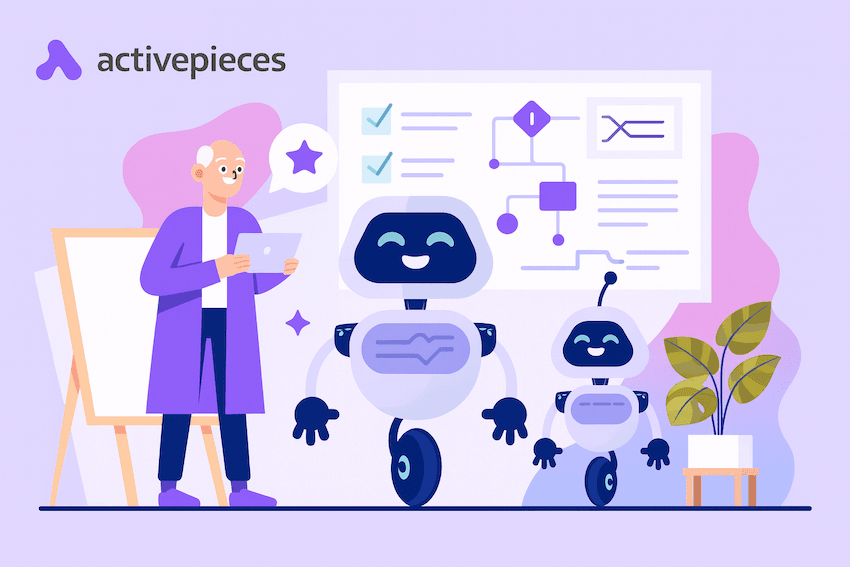
Artificial intelligence agents are software systems that observe what's happening around them, decide on the next step, and act without constant human help.
To understand how AI agents work, think of them as digital teammates that can complete tasks across sales, customer service, healthcare, and financial analysis. Businesses rely on the best AI agents to save time, reduce costs, and improve results.
In this article, you will see examples of AI agents, learn about different agent types, and find out how to build your own with Activepieces.
Try Activepieces today and watch your workflows run on autopilot!
What Are AI Agents?
AI agents are artificial intelligence programs that look at what's happening around them, make decisions, and act accordingly without direct supervision.
A chatbot usually waits for a prompt, but an agent performs complex tasks like pulling data, writing reports, or managing parts of business operations on its own. An intelligent agent also adjusts when conditions change, which makes it useful in real situations.
These agents work in a loop. First, they gather information through perception, which may involve natural language processing (NLP), user input, or data pulled from apps. Next, it plans a set of steps.
Rule-based agents follow fixed instructions, while more advanced designs adapt to new data.
After that, it takes action through tools that connect to external systems. Finally, it stores past interactions and learns from them.
Some agents function alone, and others can work with other agents. You'll find them in everything from customer support platforms to self-driving cars or even a robotic agent.
Each one combines autonomy, memory, and tool use to get jobs done without constant human involvement.
Types of AI Agents
There are several agent types that show how different systems approach problems.
Simple Reflex Agents
A simple reflex agent is the most basic type. It looks at the current input and reacts on the spot. Nothing is stored for later use, and no past events shape what it does next. It's guided only by predefined rules, like "if the temperature drops, switch on the heater."
An individual AI agent of this kind performs well in predictable settings. You'll see them in thermostats, automatic doors, and even early robotic vacuum cleaners that move when they detect dirt. The design is fast for routine actions, but it struggles in complex spaces.
Without memory or awareness of a broader context, it can get stuck in loops or fail when conditions change.
Model-Based Reflex Agents
Model-based reflex agents keep an internal model of their surroundings, which gives them a sense of continuity. Unlike simple reflex agents that only react to what's visible, a model-based agent tracks what has already happened and predicts what might come next.
A self-driving car, for example, has sensors that capture data about nearby cars and road signs, and the internal model builds a live map of the environment. With that map, the agent can slow down for a pedestrian or change lanes in traffic.
Game characters similarly predict player actions and modify their moves accordingly. The ability to plan around unseen details makes this type much more adaptable than basic reflex designs.
Goal-Based Agents
Unlike reflex agents that react in a single moment, goal-based agents can consider the future consequences of their actions in reaching a set objective. It further evaluates different paths, compares results, and chooses the one most likely to succeed.
A GPS system is a great example. The program receives a destination, weighs route options, and shifts directions if a faster path opens.
Chess programs also rely on this method to plan several moves ahead instead of just responding to one move at a time. Robots in warehouses use it as well when moving items from shelf to station with constant checks against their goals.
Utility-Based Agents
Utility-based agents measure success in numbers.
For instance, a smart energy management system balances comfort, cost, and efficiency by calculating which setting delivers the best result overall. That calculation depends on an expected utility function, a formula that scores possible outcomes.
The agent evaluates those scores and selects the action with the best rating. Financial trading bots and recommendation engines also follow this model by assigning value to outcomes and acting based on the best expected return.
By ranking choices, the agent makes decisions that are not just effective but optimized for your situation.
Learning Agents
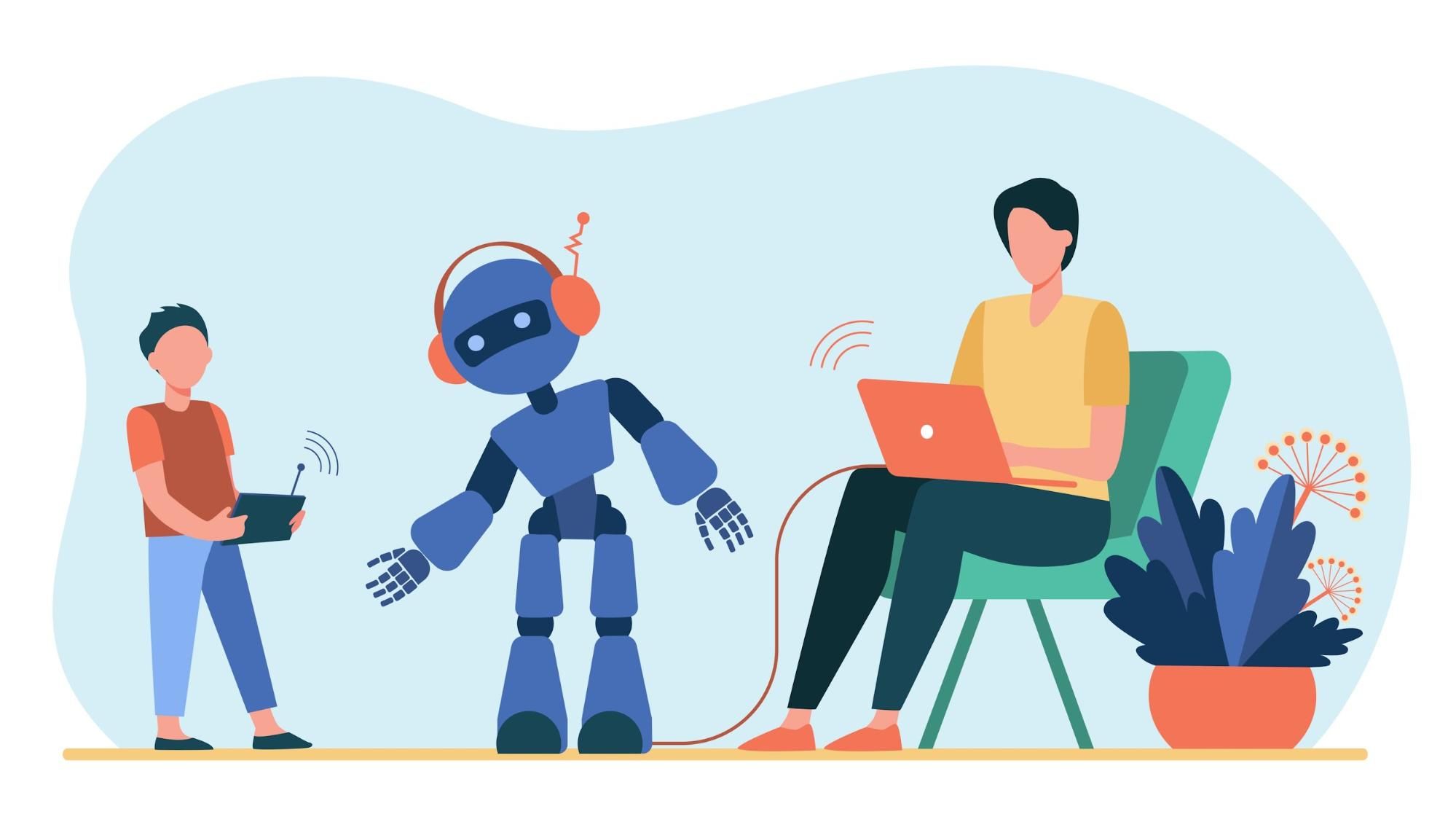
A learning agent doesn't repeat fixed instructions but adapts based on feedback. Four parts make that process work:
- Performance element carries out actions
- Learning element updates knowledge
- Critic checks the results
- Problem generator adds new tests
Together, those pieces create a cycle of trial and adjustment. Continuous learning AI agents improve over time by learning from past interactions and applying the lessons to future choices.
You'll see this in recommendation engines that get better at predicting what you'll enjoy and in spam filters that refine which emails to block.
Multi-Agent Systems
A multi-agent system (MAS) brings multiple agents together to work on a shared task. Each one has a specific skill, which makes it possible to divide work into manageable parts.
Traffic control illustrates this well: one agent handles signals, another monitors congestion, while others represent vehicles.
Multiple specialized agents collaborate under the coordination of a supervisor agent, so the system runs smoothly even when conditions change. Additionally, multiple AI agents can share data, make independent decisions, and still contribute to a larger outcome.
This setup scales easily, handles complex workflows, and avoids single points of failure.
Hierarchical Agent Systems
A hierarchical agent builds structure by organizing roles into layers. Higher levels handle planning, while lower levels take care of direct actions.
More complex ways to deploy AI agents appear in this model since the work is broken down step by step. Other AI agents carry out small pieces, and their results are combined into one complete output.
Manufacturing, fleet management, and supply chains use a hierarchical system to keep order when large projects should be divided among many units. By assigning responsibility at different layers, the system still functions even if one part fails.
6 Real-World AI Agents Examples
Advanced AI agents are no longer limited to theory. You can already find them in real-world examples:
1. Customer Support AI Agents
Customer support agents powered by AI can do much more than old chatbots. A customer service agent now listens, analyzes the request, and chooses the best response. These systems handle user interactions across email, chat, and phone while keeping context intact.
Many customer support agents perform various routine tasks such as classifying tickets, sending reminders, or pulling account data. AI-powered agents can answer common questions on their own and resolve frequent inquiries without requiring human intervention.
When the problem is unusual or sensitive, the case moves to human agents with all the background already included. That handoff prevents the customer from repeating information and keeps service moving smoothly.
With these capabilities, teams save hours while focusing on issues that need empathy and judgment. Customers notice faster replies and better accuracy, which naturally improves customer satisfaction.
Activepieces Flow: Customer Support Ticketing
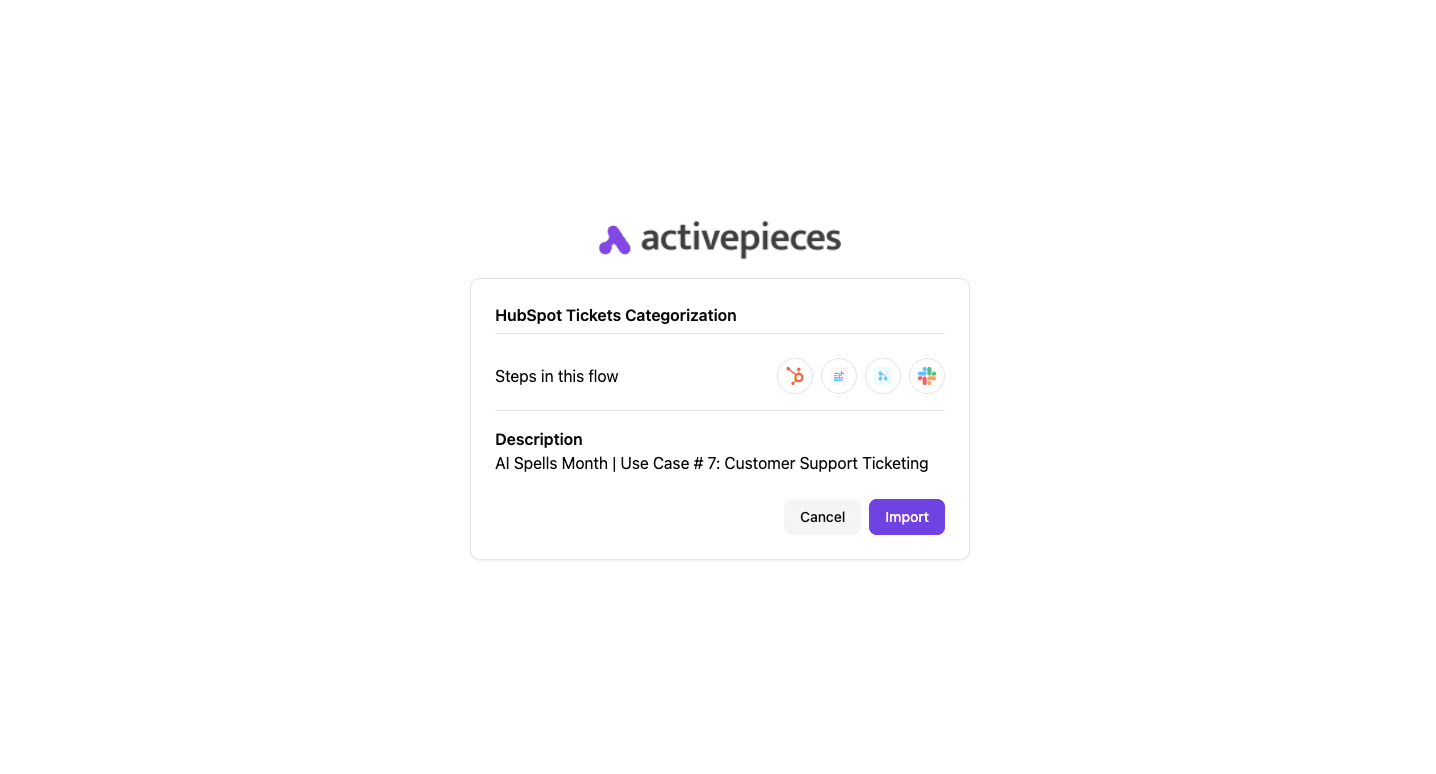
Support tickets pile up when no one knows who should handle them. Activepieces clears that up by moving each ticket to the right place right away.
How Activepieces automates it:
- A new ticket is created in HubSpot.
- Activepieces catches it and runs an AI step to rewrite the description so it's clear.
- Another AI step tags the ticket by department (billing, tech, support, etc.).
- A router sends the ticket to the right team.
- A Slack notification pops up in the right channel so someone can act on it fast.
Template: Activepieces HubSpot Tickets Categorization
2. Sales and Lead Generation AI Agents
Sales agents that run on AI bring automation into prospecting, lead scoring, and outreach. One type builds contact lists by pulling data from websites and business profiles. Another enriches those profiles with company size, job titles, and recent news.
Chat-based systems open conversations with visitors on a site, guide them toward products, and even schedule a meeting. Automated outreach tools write personalized emails, track replies, and trigger follow-ups if no answer comes back.
Lead scoring agents sort contacts by analyzing behavior and engagement to give you a ranked list of prospects.
Activepieces Flow: Lead Nurturing

Sending the same reminder email over and over doesn't build trust. Activepieces helps you make every follow-up feel personal without adding more work.
How Activepieces automates it:
- A scheduled trigger runs as instructed.
- Activepieces pulls from a Google Sheet of leads and resources.
- An AI step picks a random lead and an article to share.
- Text AI writes a personal email using that match.
- An optional delay makes the send time feel natural.
- The email piece sends the message.
Template: Activepieces Lead Nurturing
3. Marketing and Content AI Agents
Marketing agents powered by AI make it easier to plan, create, and distribute material across channels. Some act as virtual assistants that help brainstorm topics, draft posts, or even write full articles.
Others analyze data from customer behavior while also processing data from market trends.
With AI tools built on agent technology, you can identify patterns in customer behavior and adjust campaigns quickly. That analysis supports more informed decisions about which messages to use and when to share them.
Beyond content creation, agents can also handle scheduling, repurposing, and distribution so the right content reaches the right audience at the right time.
Activepieces Flow: Content Repurposing
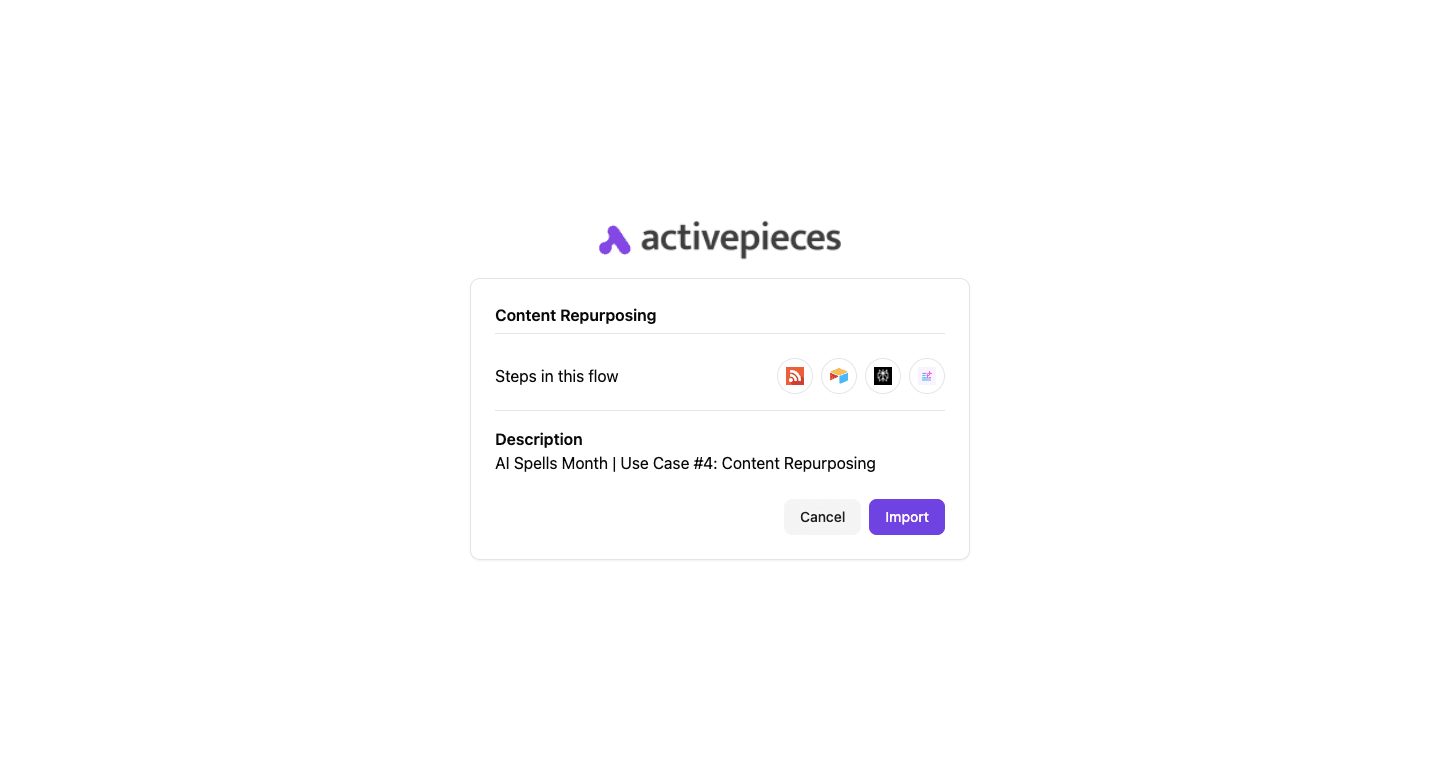
Writing content takes time, and publishing it across different platforms takes even more. Activepieces makes that whole cycle easier by turning one article into ready-made posts for multiple channels.
How Activepieces automates it:
- An RSS feed trigger grabs new articles from a site.
- The article is saved in Airtable as the base record.
- Perplexity AI pulls in supporting research like stats or expert quotes.
- Claude AI rewrites the piece into different formats:
- A LinkedIn post
- An Instagram carousel
- 5-7 tweets
- All versions are stored back in Airtable so your team can pick them up and publish.
Template: Activepieces Content Repurposing
4. Operations and Workflow AI Agents
Operations agents manage behind-the-scenes processes that keep companies running. A supply chain agent checks vendor pricing, schedules shipments, and files invoices without help.
Other designs perform tasks like reading documents, analyzing errors, and sending updates across systems.
AI agents offer a step up from older process automation since they adapt when conditions change. These systems further focus on automating complex tasks like forecasting demand or spotting equipment issues before they cause delays.
By dividing work among multiple agents, the system handles multi-step processes quickly. The result is lower cost, fewer errors, and faster delivery of routine work.
Activepieces Flow: Invoice Reminder
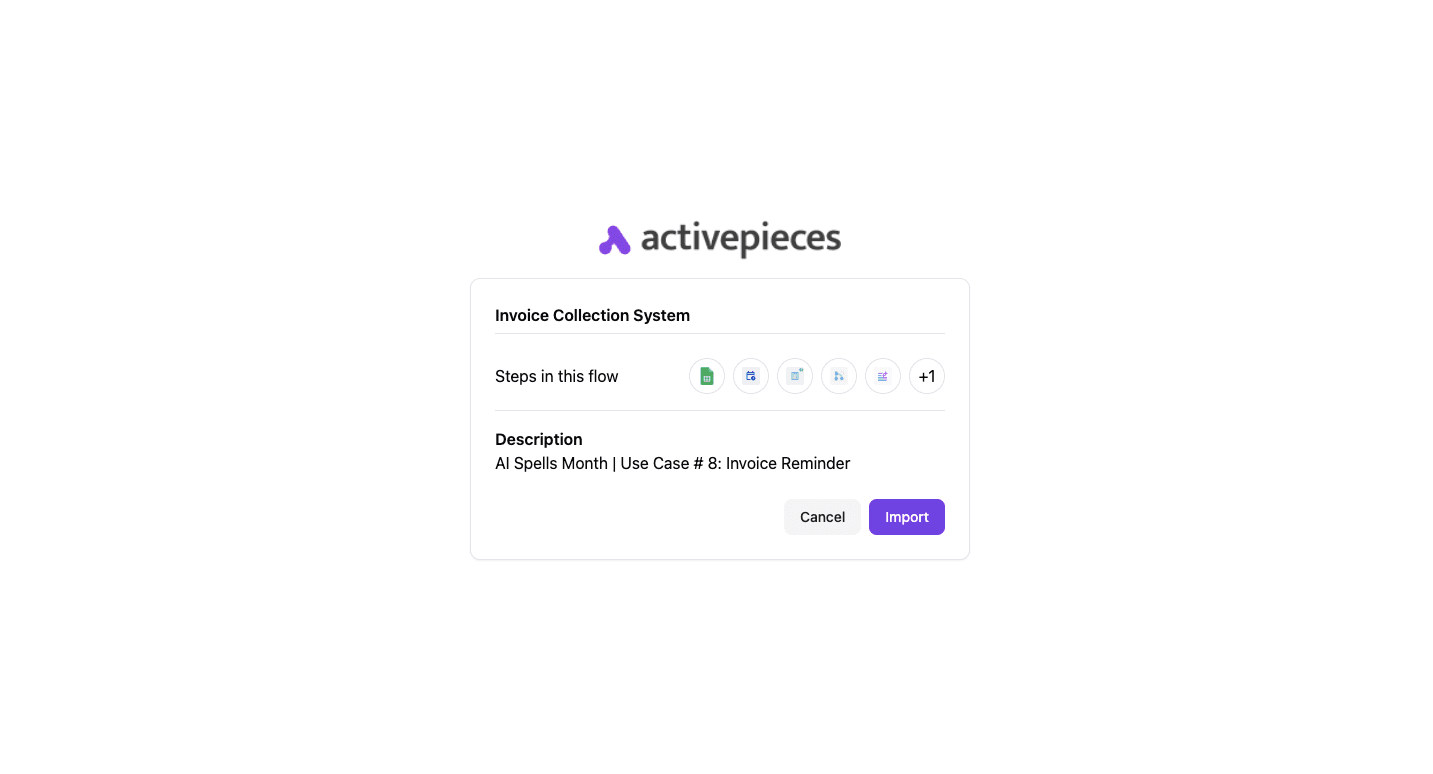
Chasing late invoices eats up time and can strain relationships with clients. Activepieces helps by tracking overdue payments and sending reminders automatically.
How Activepieces automates it:
- Payment info comes from a Google Sheet or a tool like Stripe.
- Date Helper checks how many days the invoice is past due.
- A Router decides what happens next:
- 7 days late → gentle reminder
- 14 days late → firmer tone
- 21 days late → strong notice
- The Text AI writes a personalized email based on the overdue stage.
- An email piece sends it to the client.
Template: Activepieces Invoice Collection System
5. HR and Recruiting AI Agents
HR teams use AI to speed up hiring and improve employee support. Recruiting agents scan resumes, match candidates to roles, and even send invites to interviews.
There are even agents who answer staff questions about payroll or benefits on chat platforms. These designs also support onboarding by guiding new hires through forms and training.
In performance reviews, agents coordinate data from projects, communication tools, and feedback sources to give you a full picture.
Business operations gain from faster decision-making, since the system can tackle complex tasks like predicting turnover or finding skill gaps.
Human resources teams further use agents to connect HR with supply chain management when staff planning needs to match business demands.
Activepieces Flow: CV Scanning and Scoring
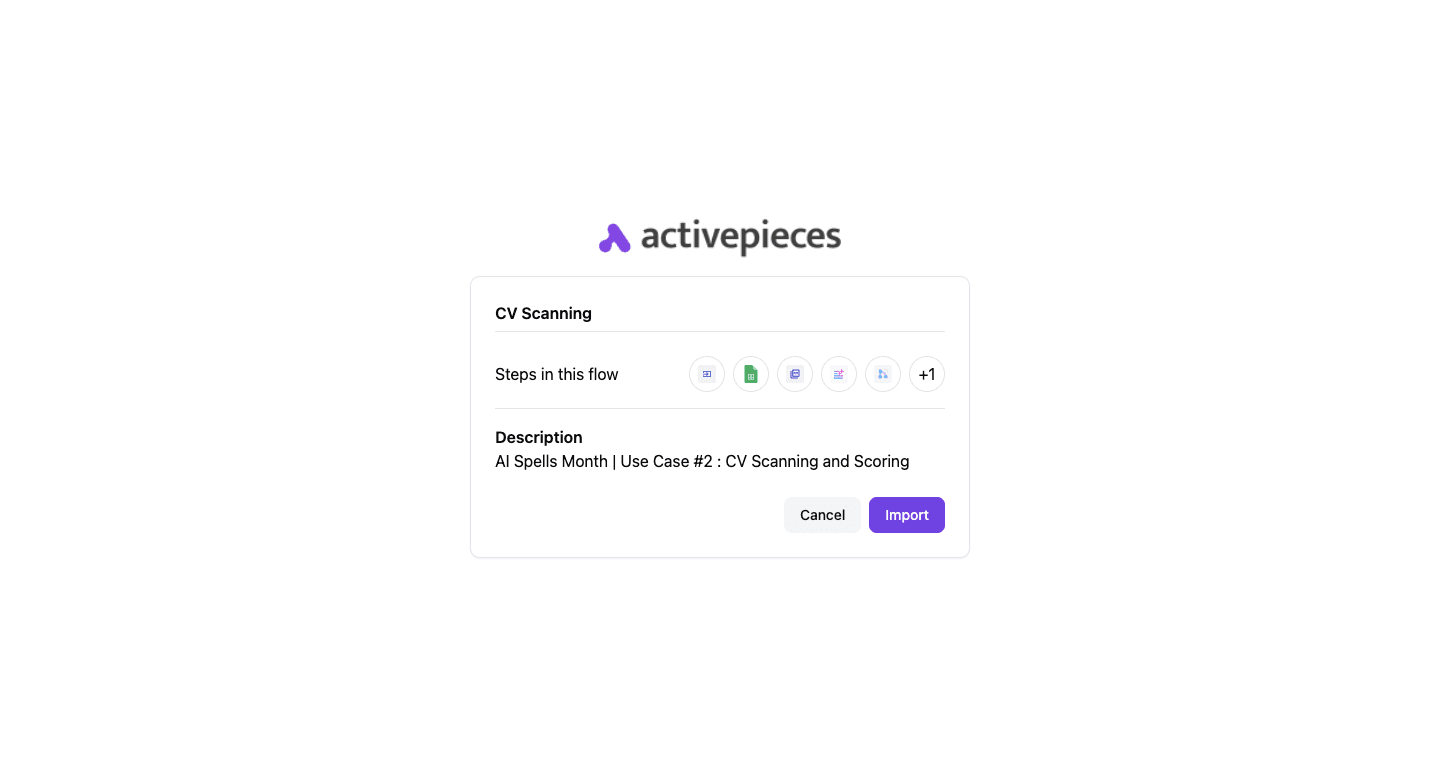
Recruiters often spend hours sifting through piles of CVs, only to narrow down the same set of candidates they could have flagged in minutes.
Activepieces cuts that wasted effort by scanning, summarizing, and scoring applications automatically.
How Activepieces automates it:
- A form trigger collects candidate details along with their CV.
- The Extract Text feature pulls all the text from the CV file.
- Claude AI summarizes the CV into three main points so the recruiter gets a quick snapshot.
- Llama AI compares the CV against the job description and assigns a score from 1 to 10.
- The results go into a Google Sheet for tracking, including candidate details, summary, and score.
- Branching logic sorts each CV into "qualified" or "unqualified" folders in Google Drive.
Template: Activepieces CV Scanning
6. Finance and Business AI Agents
Money moves fast, so you need tools that act in real time. In retail, commerce AI agents power dynamic pricing systems that react to stock levels, demand, and competitor moves. Back-office helpers take on repetitive tasks such as invoice capture, coding, and reminders.
Trading agents weigh risk and reward, then act only when signals point to a desired outcome. Planners, on the other hand, rely on demand forecasts to set inventory and staffing before a rush hits.
Together, these agents shorten cycles, raise accuracy, and keep decisions tied to fresh data.
Activepieces Flow: Weekly Business Review Report
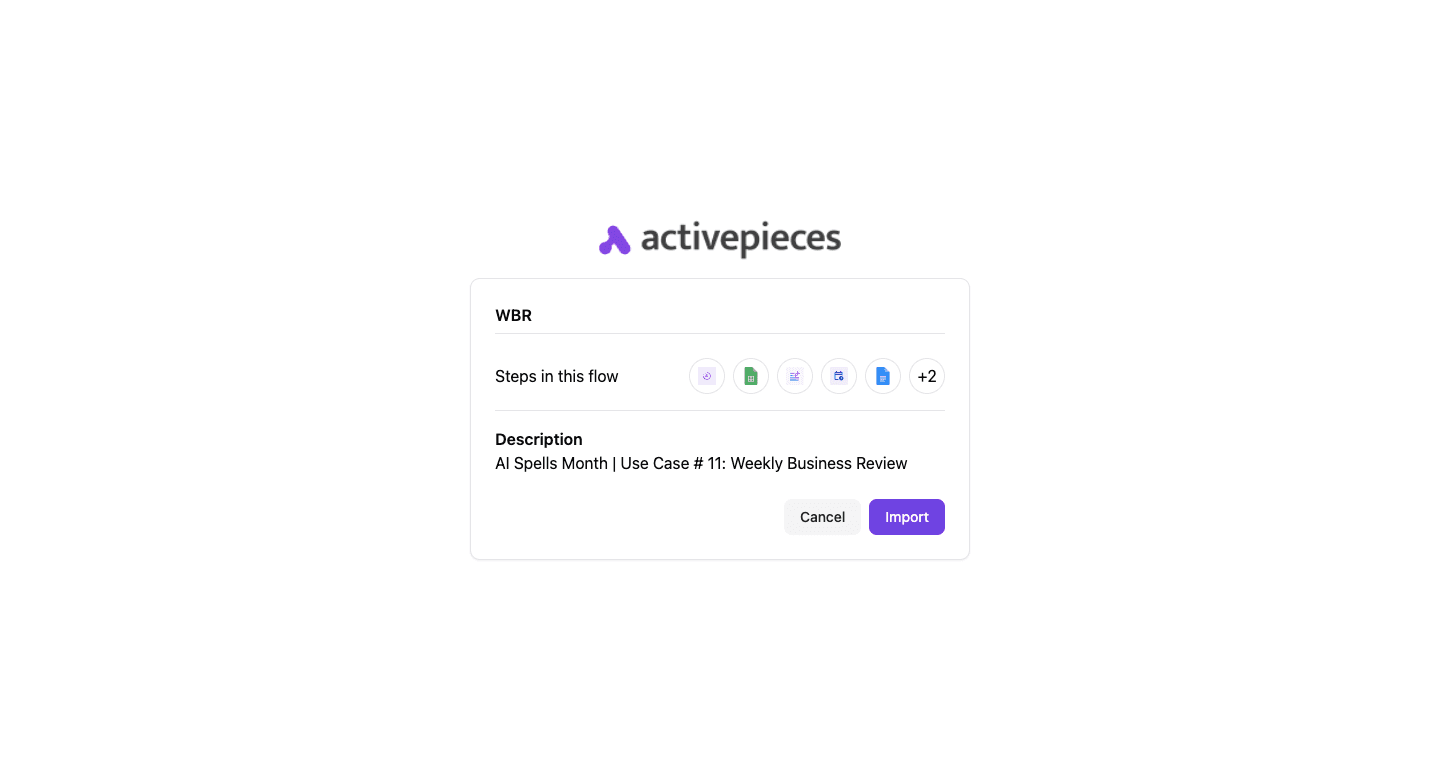
Compiling weekly business review reports usually means juggling spreadsheets, writing summaries, and chasing updates.
Activepieces makes the entire cycle automatic, so leaders always have the latest numbers in front of them.
How Activepieces automates it:
- A scheduled trigger kicks off the workflow each week (like Monday morning).
- A Google Sheet serves as the source of all tracked data: metrics, tasks, and results.
- A Text AI piece analyzes the numbers and turns them into a formatted Weekly Business Review (WBR) report.
- The report is saved as a Google Doc in Drive.
- A Slack notification delivers the document to the right manager or channel for review.
- A human-in-the-loop step lets someone approve the report in Slack.
- Once approved, a Loop action clears the old data from the sheet so the next week starts fresh.
Template: Activepieces WBR
Building AI Agents for Your Business Processes on Activepieces
Creating an AI agent doesn't have to feel technical or complicated. Within minutes, you can move from planning to a working system that runs tasks for you using Activepieces.
- Sign up for Activepieces. Creating an account takes only a few minutes and gives you access to the full platform.
- Open your dashboard and select "Agents" on the left panel. Every new AI agent you design will start from here.
- Click on "New Agent." That begins your own AI agent creation process.

- Add a name and a short description so you can easily recognize your setup later.
- Type in the instructions that will guide your agent. Clear instructions shape how it will respond and what actions it will take.
- Select tools. Click "Add Tool" and choose between:
- From piece - Pick from 481 pre-built integrations.
- From flow - Turn your flows into tools your agents can use.
Once saved, the agent is ready to run tasks, connect with apps, and deliver results on its own.
Sign up for free and start building your first AI agent today!
Design AI Agents That Deliver Results With Activepieces

You've seen AI agent examples across support, sales, ops, and more. Activepieces is the place to turn those ideas into real systems your team can run today.
The builder feels simple, yet it supports advanced AI systems that can act, learn, and integrate with your stack without you writing much code.
Start with a trigger, add actions, then layer in logic and AI steps so your agent reacts to real inputs.
Activepieces also gives your agents access to tools through the model context protocol, so one agent can call Slack, HubSpot, Google Sheets, OpenAI, or any other piece as needed. That kind of access is how intelligent systems move from "toy bot" to something that runs real work.
Activepieces beats clunky platforms by staying open-source, flexible, and packed with integrations. You get power without the mess, and your agents stay easy to edit as needs change.
Talk to sales and unlock the best plan for your business!
FAQs About AI Agents Examples
What are the five types of agents in AI?
The five types of agents in AI are simple reflex agents, model-based reflex agents, goal-based agents, utility-based agents, and learning agents. Each one handles specific tasks in a different way, and multiple types can appear inside a single system depending on how complex the job is.
What is considered an AI agent?
An AI agent is any system that observes its environment, reasons about its options, and acts toward an outcome. Many rational agents rely on large language models, rules, or learned behavior to pick actions, and some can adjust those actions when past data or new inputs change.
You'll see real-world examples of AI in healthcare: AI agents that draft notes, support diagnostics, and help build personalized treatment plans.
Is ChatGPT an AI agent?
ChatGPT can act as an AI agent when it's paired with tools, memory, and automation flows. On its own, it's a language model, but in a workflow, it reads context from a knowledge base, adapts to user preferences, and makes decisions the same way goal-based agents evaluate different paths.
What are the seven types of AI agents?
The seven types of AI agents expand the earlier list and include simple reflex, model-based reflex, goal-based, utility-based, learning, multi-agent, and hierarchical agents. Some designs use multi-agent collaboration, where several units share information or divide work using company documents, smart home devices, or other sources.
What are the different types of memories an agent has?
Agents use three kinds of memory: short-term, long-term, and episodic.
Short-term covers the current interaction, long-term stores learned concepts and historical data, and episodic memory saves events and outcomes so the system can compare past data and adjust emotional intelligence or reasoning later.


